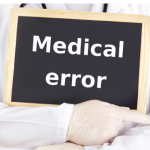Debiasing Strategies
Forcing strategies enable a provider to insert predetermined best practices into a scenario in which biases may lead the provider away from best practices. Generic forcing strategies are generalized questions providers can ask themselves while building a differential diagnosis, such as: What is the second-most-likely diagnosis? What diagnosis cannot afford to be missed? What sort of cognitive error would be most likely to occur in this setting?12
By contrast, specific forcing strategies address a common diagnostic crossroads, such as using a predefined set of diagnostic tests for a specific chief complaint. For example, a rapid response team may always order troponins, electrocardiogram and chest X-ray for all decompensating adults with chest pain. This is a cost-effective evaluation that can alert the provider to ischemic abnormalities when the provider may not have myocardial infarction high on their differential.
Along these lines, a rheumatologist may always check thyroid labs in patients being evaluated for possible myositis; although most patients won’t have thyrotoxic myopathy, uniformly ordering this inexpensive test nearly eliminates the chance of missing a patient who does have myopathy due to thyroid disease.
Metacognition and cognitive forcing strategies can be taught to trainees through a cognitive apprenticeship, in which experienced clinicians guide learners through their own cognitive processes.13 For example, when working with trainees, medical educators should consider taking time to point out clinical situations in which cognitive errors may occur or have occurred in the past.
Most cognitive errors are the result of the incorrect synthesis of information rather than the result of knowledge deficits.
Next, it’s helpful to share cognitive forcing strategies, such as when an attending physician explains, “Gout is a great mimicker of septic arthritis, and vice versa, so whenever I consider one diagnosis, I make sure to consider the other as well.”
In addition, questions from a learner or from a patient/family member can be recognized as wonderful opportunities to insert a moment of type 2—analytic—thinking into a clinical scenario, which is itself a debiasing strategy. Embrace the question, “Why do I think this isn’t anti-neutrophil cytoplasmic antibody (ANCA) associated vasculitis?” and in laying out your explanation, you may find yourself concluding that although it is not a typical ANCA presentation, it would be reasonable to order an ANCA test to rule out an atypical presentation.
Finally, although good teachers push trainees to make a commitment and state their favored diagnosis, educators should also teach trainees when and how ambiguity can be helpful. Along these lines, we should encourage trainees to ask themselves not just “What diagnosis do I think is most likely?” but also “What is the second most likely diagnosis?” and “What other diagnosis can we not afford to miss in this patient?”
A method for framing these important clinical considerations for trainees is the mnemonic “Whenever U RACE, tie your LACES” proposed by Gordon and Kemnitz (see Table 4).14
Table 4: Mnemonic for Medical Error Prevention
| Whenever U RACE, Tie Your LACES14 | Considerations |
|---|---|
| Unexplained symptoms | Are there symptoms or lab values that do not fit the current working diagnosis? |
| Return visit | Arrange for close follow-up to re-assess the patient’s clinical status and diagnosis |
| At-risk population | Is this patient part of a demographic who is at risk for cognitive bias? (mentally ill) |
| Critical Conditions | If the patient is in critical condition, what time-sensitive diagnosis must be considered? (aortic dissection, subarachnoid hemorrhage) |
| End of shift | Recognize provider fatigue. Recognize potential errors in sign-out |
| Life-threatening conditions | What conditions cannot be missed? (myocardial infarction, sepsis) |
| Anything else? | What are other possible explanations for the patient’s presentation? |
| Coherency? | Does the patient’s history and objective data fit with the current diagnosis? |
| Everything explained? | Does the diagnosis explain ALL symptoms, lab results and imaging findings? |
| Second problem present? | Could two diagnoses better explain the patient’s presentation than one diagnosis? |


